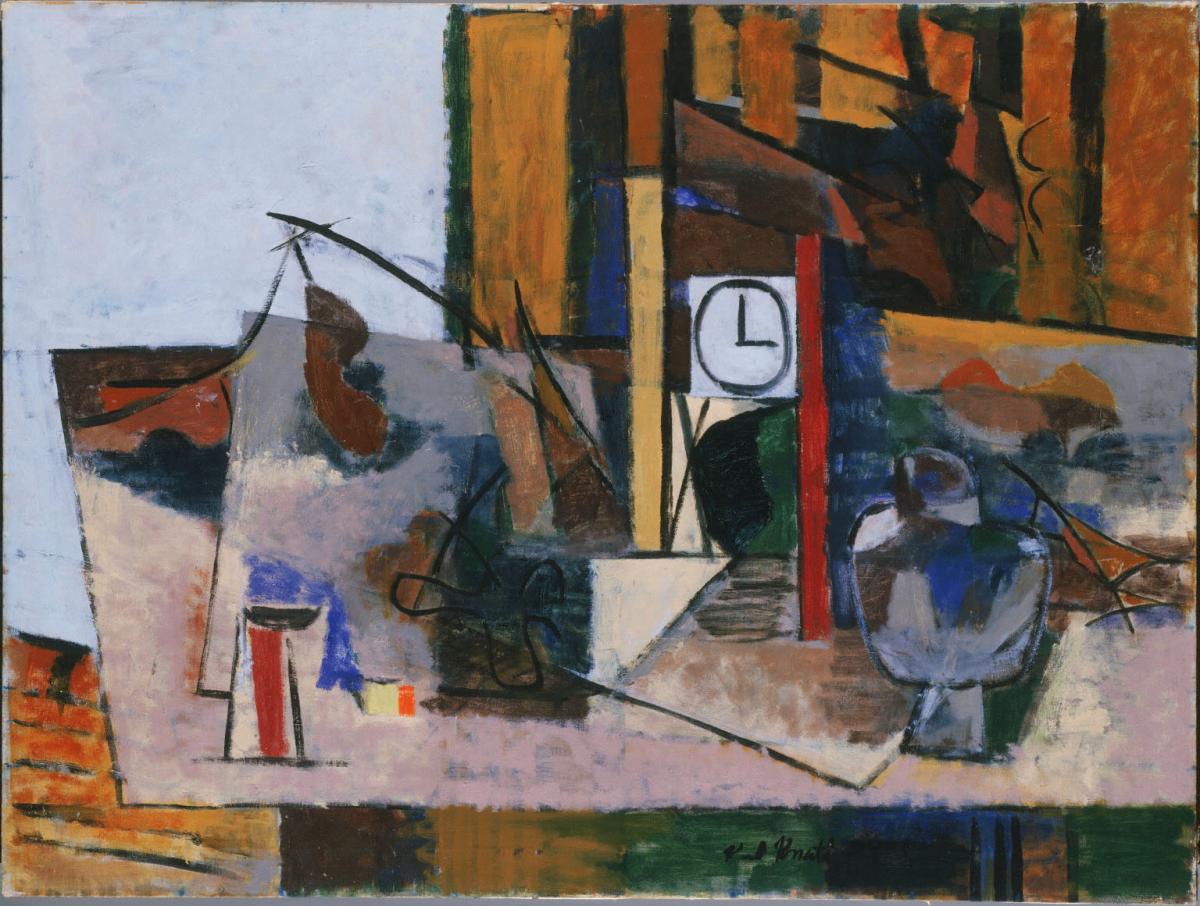Connecticut Clock
Karl Knaths ( 1949 )

“Painting actually begins by calling up illusions of some kind of space in depth by means of a surface pattern.”—Karl Knaths [1]
Duncan Phillips was Karl Knaths’s first collector and remained an ardent supporter of the modernist artist for decades. Although based in the artist colony at Provincetown, Massachusetts, Knaths impacted many students in the Washington, DC area by teaching a popular four-week course at the Phillips Gallery Art School between 1937 and 1950. [2] Phillips scheduled several installations of Knaths’s art with these courses.
The still life Connecticut Clock was painted near the end of Knaths’s tenure at the school. It features what Phillips loved in Knaths’s painting: fractured forms and expressive color also seen in the art of Paul Cezanne, Georges Braque, and Henri Matisse. To these compositional elements, Knaths added the inspiration of his coastal Northeast surroundings. His inclusion of the Connecticut shelf clock—an important example of early US clockmaking—links the painting to the history of American material culture.
Knaths’s process began with rough sketches in graphite to create “the balance of space arrangement.” He then added charcoal outlines to the canvas, highlighted in black paint and white chalk to “break things up for their plastic qualities.” [3] The clock appears in many of Knaths’s still lifes. He was drawn to its formal qualities: the circular shape of the face and the fact the hands could reinforce rectangles in the composition. [4] He associated time with memory: “For me the nostalgic remembrance of times makes time. Time-bound, I find an essential release in painting.” [5]
Text by Renée Maurer as part of the Out of Many research project
[1] Karl Knaths, “Art and the “Primary Picture,’” College Art Journal 10, no. 1 (Fall 1950): 55.
[2] Content for this entry was drawn from Erika D. Passantino, The Eye of Duncan Phillips: A Collection in the Making (Washington, DC: The Phillips Collection in association with Yale University Press, 1999), 435–40. The Phillips Gallery Art School held classes at the museum that focused on drawing and painting.
[3] R. B. Fischer, “Karl Knaths,” Inside Provincetown 1, no.1 (1966): 57.
[4] John Canaday, “Artist Speaks: Karl Knaths Discusses His Paintings in a Current Show,” New York Times, December 9, 1962, 65.
[5] Contemporary American Painting and Sculpture, exh. cat. (Urbana: College of Fine and Applied Arts, University of Illinois at Urbana-Champaign, 1957), 216.